
GINZA CONNECTIVE
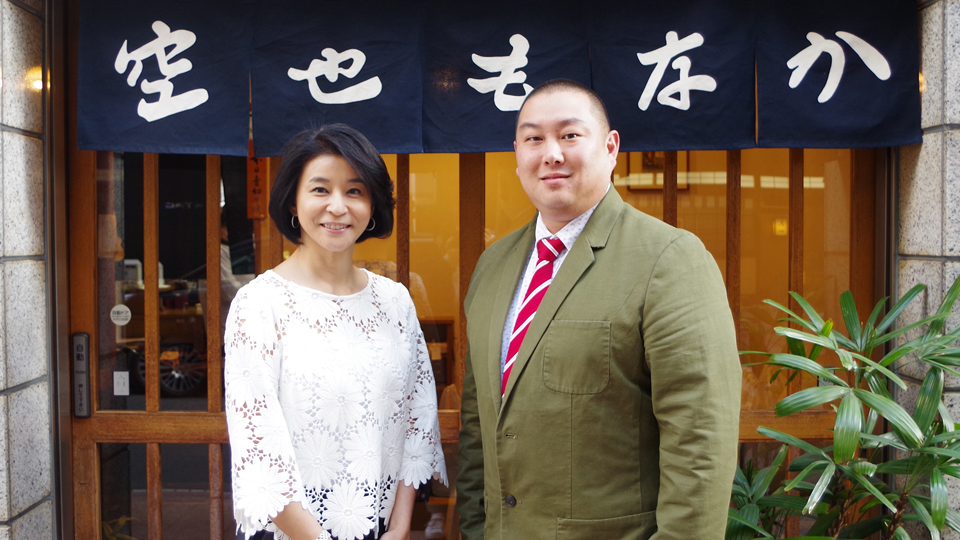
GINZA CONNECTIVE VOL.66
Hikoyuki Yamaguchi×Chisako Takashima
2017.05.01
An interview series featuring Ginza people in conversation with violinist Chisako Takashima. With a special fondness for Ginza, which holds many memories both from her professional and private lives, Takashima explores Ginza from various dimensions with her guests.In this volume, she welcomes Mr. Hikoyuki Yamaguchi, fifth-generation owner of Kuya, the long-established Japanese wagashi (Japanese confectionaries) store famous for Kuya-monaka.
A favorite of Soseki Natsume, the Kuya-monaka sells 8000 every day through reservations.
- Takashima
- Kuya’s legendary Kuya-monaka* is almost impossible to purchase without a reservation. How many do you make every day? (*monaka: wagashi prepared with azuki bean jam filling sandwiched between two thin crisp wafers made from rice)
- Yamaguchi
- We make around 8000.
- Takashima
- 8000! That is quite a number! And yet it is so difficult to purchase that it is referred to as being legendary. Is the manufacturing also done at the store in Ginza?
- Yamaguchi
- Yes. We cook the anko (azuki bean jam filling) and sandwich it between the wafers on the store premises. People are often surprised to learn that they are made in Ginza, but Ginza Fugetsudo, located diagonally across the street from us, and Seigetsudo Honten in Ginza 7-chome also manufacture their products in Ginza. There is actually quite a large variety of wagashi made in Ginza.”
- Takashima
- I see. I understand that Kuya was established in 1884 (Meiji 17). Could you please tell me about your corporate history and about the origin of your name?
- Yamaguchi
- As far as I know, our founder had originally worked for the Edo Palace, taking care of the tatami mats there, but he lost his job after the restoration of imperial rule. Just then, he was a member of the Kanto Kuya-shu, an odori-nenbutsu (Buddhist incantation chanting, drumbeating, and dancing) group, of which the owner of Eitaro Sohonpo in Nihombashi was also a member. With his help, Kuya was established in 1884 in Ikenohata in Ueno. Our name was taken from Priest Kuya. Since Ueno was burnt down in the Great Tokyo Air Raid, we relocated to Ginza in 1949 (Showa 24).
- Takashima
- Have you sold monaka from the very beginning?
- Yamaguchi
- We have lost almost all materials that would tell us about the pre-war period, but I am pretty certain that they sold monaka back then as well. This because some of Kuya’s most loyal clients included literary masters of the times, and the Kuya-monaka and Kuya-mochi occasionally appear in their works. In Soseki Natsume’s I am a Cat, the Kuya-mochi is served with green tea. Therefore, our store is sometimes introduced in special features on topics such as “Soseki’s favorite stores.”
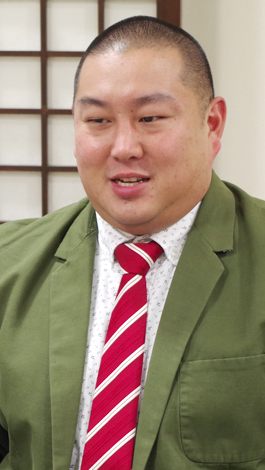
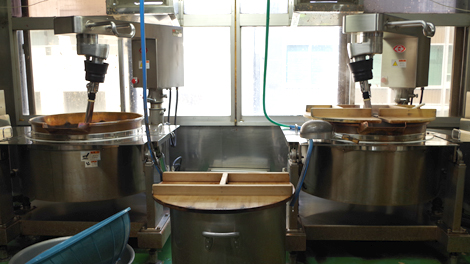
Manufacturing space in the same building as the store. Stirrng anko in the large pot in the back.
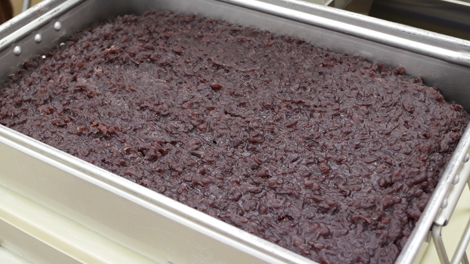
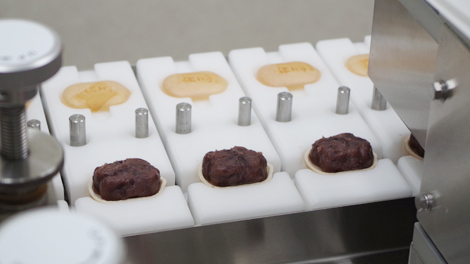
Sandwiching the anko in monaka wafers
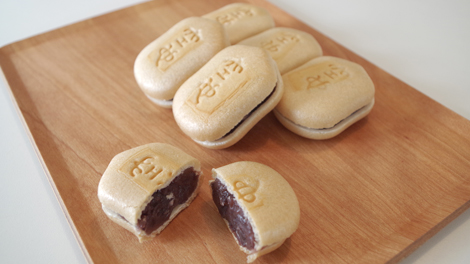
Kuya-monaka
Dedicated to selling over the counter under the motto “no credit sales even when sweets sell well”.
- Takashima
- I have heard that Kuya has a corporate policy, “no “kashi-uri” even when kashi (sweets) sell well.” What do you mean by this?
- Yamaguchi
- As far as I know, it was the policy of my grandfather, the third-generation owner of the store. “Kashi-uri” means credit sales. Our style of business may appear not to be commercially driven. At Kuya, we do not offer credit sales and accept only cash. Orders are received over the phone or in person at the store and we ask our customers to come to our store to collect their purchase. We do not provide shipping services. We make it a rule to “sell products handmade in the middle of Ginza within a day.”
- Takashima
- Now that everything has become convenient, I find that traditional style of business very attractive. And you are following the footsteps of earlier generations?
- Yamaguchi
- I would say so. I suppose I am not determined to make a great amount of profit. Many people may have the image that the Kuya-monaka is rare and therefore expensive, but they are available for only 103 yen a piece.
- Takashima
- That is quite inexpensive! Is there anything that you lay particular importance upon in terms of your manufacturing methods?
- Yamaguchi
- We have no secret family recipe that is passed down only from parent to child. “Carefully cook the best ingredients.” That is all there is to it. At Kuya, we do not make confectionaries that require delicate workmanship. Our confenctionaries are rather simple and our customers appreciate the simpleness, which is often referred to as a quality of Edo culture. Therefore, we are dedicated to careful and reliable work, but I believe anyone can make the same products once they set their mind to it (laughs).
- Takashima
- Oh, I am sure that there is an essence that even you don’t notice. What other kinds of wagashi do you make?
- Yamaguchi
- We also constantly make six types of namagashi (unbaked wagashi). A namagashi that is available all year round is the Kuya-soshi, which is like a dorayaki, with anko sandwiched between pancakes, only we cut them in squares, in the shape of a book. We also offer seasonal confectionaries. For example, in summertime, we make mizu-yokan (sweet bean jelly) and in wintertime, we make nerikiri (unbaked cake that is made by mixing and kneading its ingredients, mainly white bean jam, refined or glutinous rice flour, sugar and yam).
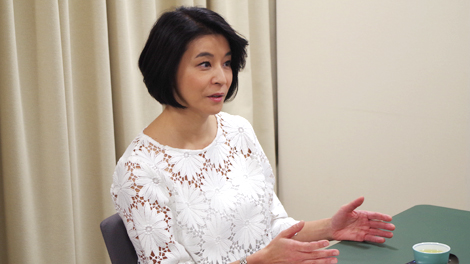
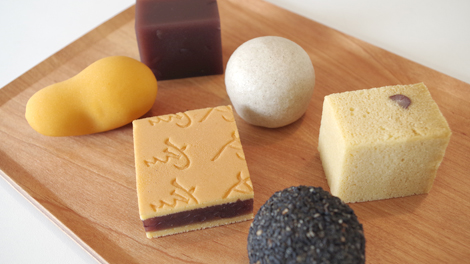
Namagashi sold at Kuya
1 2
All List
- GINZA CONNECTIVE VOL.0 Ryo Sayegusa×Chisako Takashima
- GINZA CONNECTIVE VOL.1 Toshiyuki Kosaka×Chisako Takashima
- GINZA CONNECTIVE VOL.2 Yasuharu Mizuhara×Chisako Takashima
- GINZA CONNECTIVE VOL.3 Hitoshi Ishihara×Chisako Takashima
- GINZA CONNECTIVE VOL.4 Shinji Hara×Chisako Takashima
- GINZA CONNECTIVE VOL.5 Choichiro Motoyama×Chisako Takashima
- GINZA CONNECTIVE VOL.6 Noriko Okazoe×Chisako Takashima
- GINZA CONNECTIVE VOL.7 Choichiro Motoyama×Chisako Takashima
- GINZA CONNECTIVE VOL.8 Sayuri Yamaguchi×Chisako Takashima
- GINZA CONNECTIVE VOL.9 Yoshiki Tani×Chisako Takashima
- GINZA CONNECTIVE VOL.10 Yoshifumi Itoh×Chisako Takashima
- GINZA CONNECTIVE VOL.11 Kunihiko Miwa×Chisako Takashima
- GINZA CONNECTIVE VOL.12 Shin Watanabe×Chisako Takashima
- GINZA CONNECTIVE VOL.13 Akihiko Tsuda×Chisako Takashima
- GINZA CONNECTIVE VOL.14 Rie Horikawa×Chisako Takashima
- GINZA CONNECTIVE VOL.15 Jun Takahashi×Chisako Takashima
- GINZA CONNECTIVE VOL.16 Yusuke Harada×Chisako Takashima
- GINZA CONNECTIVE VOL.17 Lintaro Mizuhara×Chisako Takashima
- GINZA CONNECTIVE VOL.18 Keisuke Anzai×Chisako Takashima
- GINZA CONNECTIVE VOL.19 Hozu Yamamoto×Chisako Takashima
- GINZA CONNECTIVE VOL.20 Koji Shibata×Chisako Takashima
- GINZA CONNECTIVE VOL.21 Kayo Hosono×Chisako Takashima
- GINZA CONNECTIVE VOL.22 Mitsuru Saito×Chisako Takashima
- GINZA CONNECTIVE VOL.23 Akihisa Kawaguchi×Chisako Takashima
- GINZA CONNECTIVE VOL.24 Mamoru Sugiyama×Chisako Takashima
- GINZA CONNECTIVE VOL.25 Michiaki Kumagai×Chisako Takashima
- GINZA CONNECTIVE VOL.26 Shinichi Tanizawa×Chisako Takashima
- GINZA CONNECTIVE VOL.27 Koichi Suzuki×Chisako Takashima
- GINZA CONNECTIVE VOL.28 Munehito Matsuzaki×Chisako Takashima
- GINZA CONNECTIVE VOL.29 Hiroshi Hara × Chisako Takashima
- GINZA CONNECTIVE VOL.30 Shigeyuki Ando×Chisako Takashima
- GINZA CONNECTIVE VOL.31 Yukichi Ishikura × Chisako Takashima
- GINZA CONNECTIVE VOL.32 Seiko Yamada × Chisako Takashima
- GINZA CONNECTIVE VOL.33 Mami Nagai × Chisako Takashima
- GINZA CONNECTIVE VOL.34 Ryuta Takahashi × Chisako Takashima
- GINZA CONNECTIVE VOL.35 Kazumasa Osumi×Chisako Takashima
- GINZA CONNECTIVE VOL.36 Masahiro Kameoka×Chisako Takashima
- GINZA CONNECTIVE VOL.37 Shoichiro Watanabe×Chisako Takashima
- GINZA CONNECTIVE VOL.38 Keiji Niimoto×Chisako Takashima
- GINZA CONNECTIVE VOL.39 Chieko Nakamura ×Chisako Takashima
- GINZA CONNECTIVE VOL.40 Atsushi Yamane×Chisako Takashima
- GINZA CONNECTIVE VOL.41 Masaya Shibuya×Chisako Takashima
- GINZA CONNECTIVE VOL.42 Makoto Suzuki×Chisako Takashima
- GINZA CONNECTIVE VOL.43 Masaya Konaka×Chisako Takashima
- GINZA CONNECTIVE VOL.44 Masakazu Tanaka×Chisako Takashima
- GINZA CONNECTIVE VOL.45 Koko Kameoka × Chisako Takashima
- GINZA CONNECTIVE VOL.46 Jin Hirayama×Chisako Takashima
- GINZA CONNECTIVE VOL.47 Takashi Hoshihara×Chisako Takashima
- GINZA CONNECTIVE VOL.48 Mikiko Kimura × Chisako Takashima
- GINZA CONNECTIVE VOL.49 Keisuke Okamoto×Chisako Takashima
- GINZA CONNECTIVE VOL.50 Akira Ito × Chisako Takashima
- GINZA CONNECTIVE VOL.51 Tatsuhiko Adachi × Chisako Takashima
- GINZA CONNECTIVE VOL.52 Masahiko Yamano×Chisako Takashima
- GINZA CONNECTIVE VOL.53 Kiyoshi Kanazashi×Chisako Takashima
- GINZA CONNECTIVE VOL.54 Noriyuki Tsuji×Chisako Takashima
- GINZA CONNECTIVE VOL.55 Shoichi Kobayashi×Chisako Takashima
- GINZA CONNECTIVE VOL.56 Isao Nanjo×Chisako Takashima
- GINZA CONNECTIVE VOL.57 Shinobu Mitsuoka×Chisako Takashima
- GINZA CONNECTIVE VOL.58 Motoyoshi Yasuda×Chisako Takashima
- GINZA CONNECTIVE VOL.59 Toru Fujiki×Chisako Takashima
- GINZA CONNECTIVE VOL.60 Yuji Ida×Chisako Takashima
- GINZA CONNECTIVE VOL.61 Hitoshi Miki×Chisako Takashima
- GINZA CONNECTIVE VOL.62 Takehiko Furuya× Chisako Takashima
- GINZA CONNECTIVE VOL.63 Naoki Yoshizawa×Yusuke Yoshizawa×Chisako Takashima
- GINZA CONNECTIVE VOL.64 Kazuhito Kawase × Chisako Takashima
- GINZA CONNECTIVE VOL.65 Toshiji Yuki× Chisako Takashima
- GINZA CONNECTIVE VOL.66 Hikoyuki Yamaguchi×Chisako Takashima
- GINZA CONNECTIVE VOL.67 Daisuke Nagano×Chisako Takashima
- GINZA CONNECTIVE VOL.68 Shuichi Motohashi× Chisako Takashima
- GINZA CONNECTIVE VOL.69 Shinpei Tonaka×Chisako Takashima
- GINZA CONNECTIVE VOL.70 Shinya Kanematsu × Sachiko Takashima
- GINZA CONNECTIVE VOL.71 Masataka Yano×Chisako Takashima
- GINZA CONNECTIVE VOL.72 Mitsuhiro Kurokawa× Chisako Takashima
- GINZA CONNECTIVE VOL.73 Ryo Saegusa×Chisako Takashima








